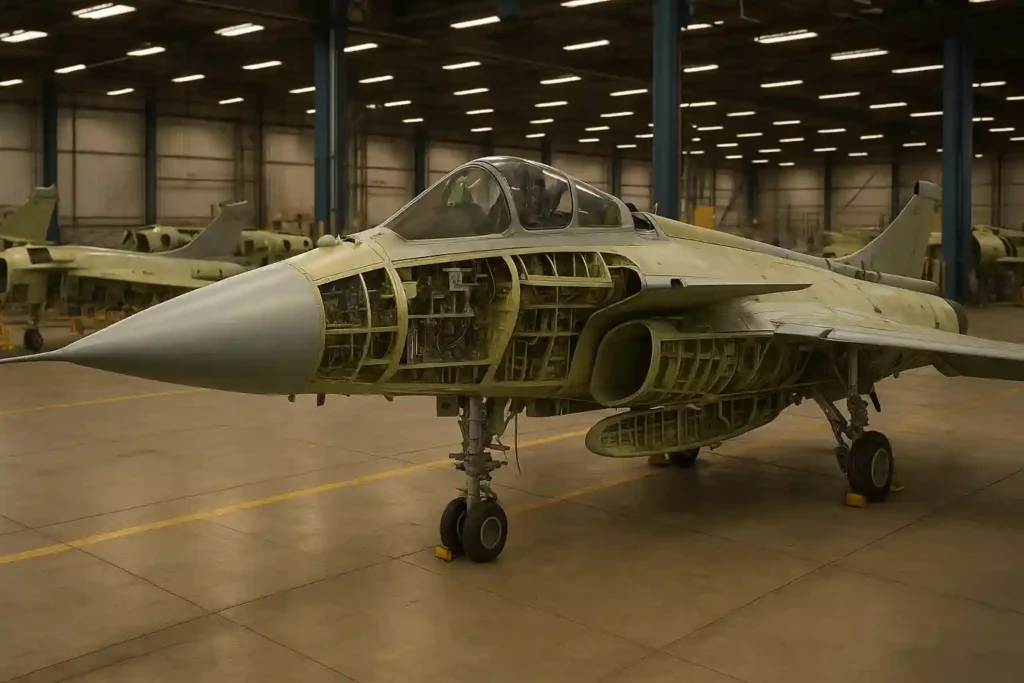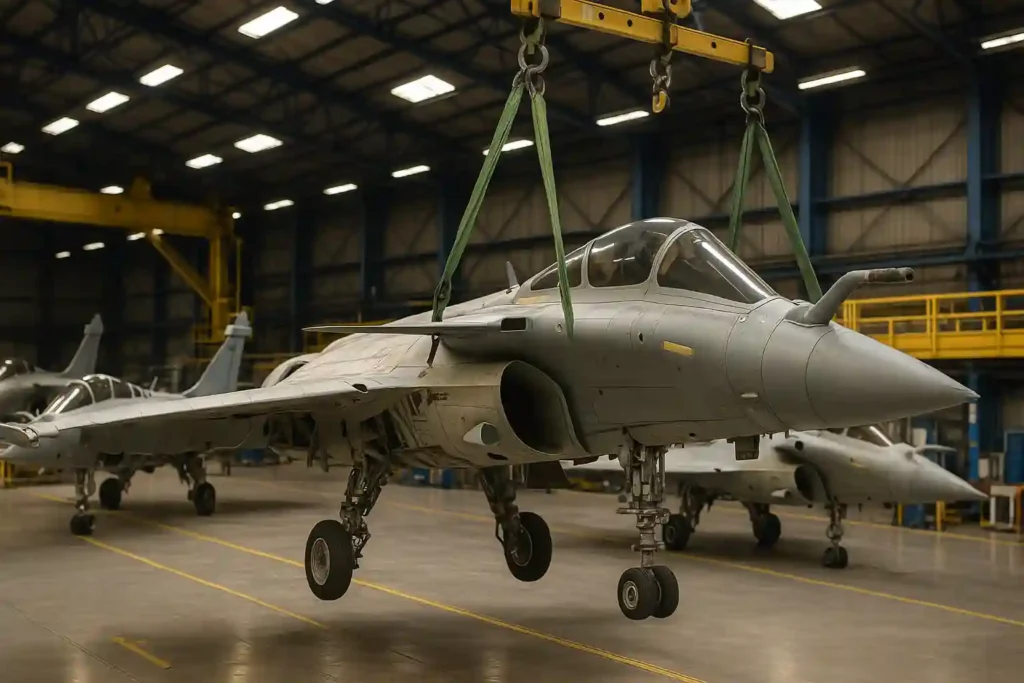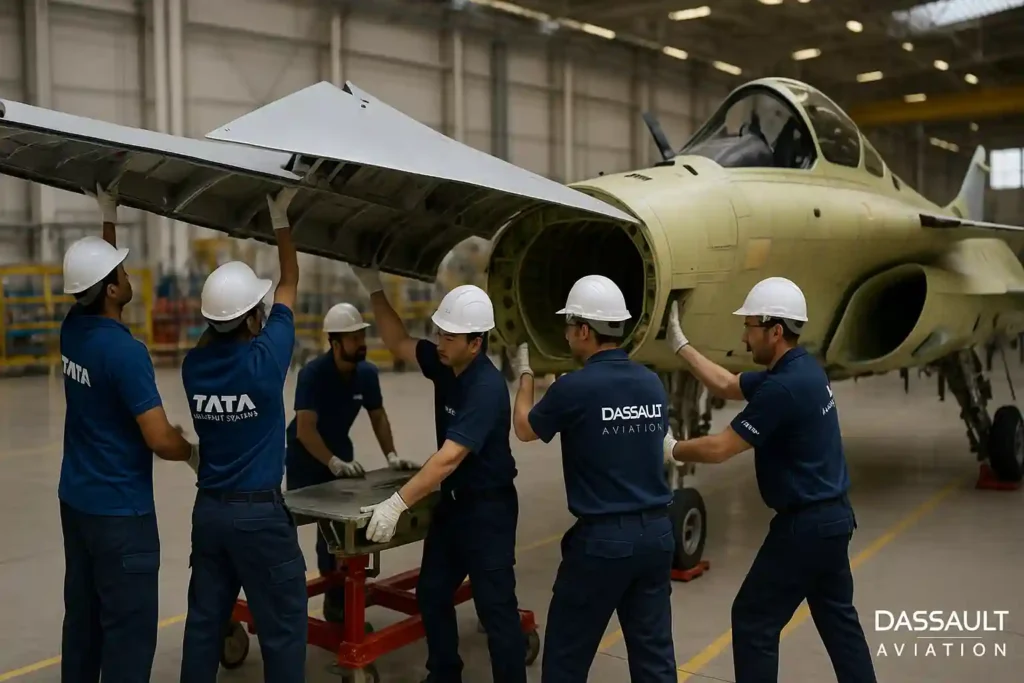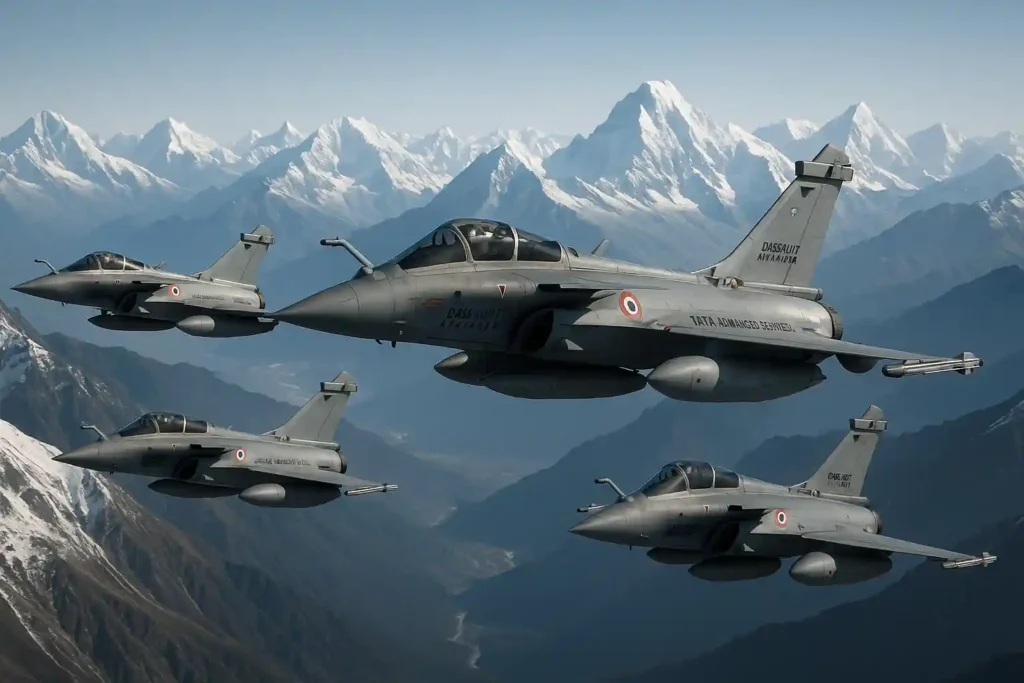India’s ambition to become a global defence manufacturing hub just took a historic leap. In a groundbreaking move, Tata Advanced Systems Limited (TASL) has partnered with France’s Dassault Aviation to begin production of Rafale fuselages in India. This isn’t just a deal—it’s a signal that India is ready to build not just fighter jets, but the future of aerospace.
From Hyderabad’s production lines to Dassault’s global supply chain, this collaboration promises to reshape India’s role in modern military aviation.
Let’s explore how, why, and what this means for India’s defence ecosystem and for global airpower.
What Is a Rafale Fuselage, and Why Is It So Critical?
The fuselage is the central structure of any aircraft. In the case of the Rafale—an advanced multi-role fighter—it’s the high-precision core that houses critical systems like the cockpit, avionics, fuel tanks, radar, and weapons mounts. In simpler terms, the fuselage is the spine of the jet.

Producing this part is no small task. It involves high-tolerance machining, composite layering, and extreme quality control. That’s why the decision to manufacture Rafale fuselages in India is such a strategic milestone.
Why Is Dassault Manufacturing Rafale Fuselages in India?
1. Tapping into India’s Aerospace Ecosystem
India’s aerospace sector is maturing fast. With the success of the Tejas program and a growing list of global partnerships, India is seen as a reliable partner in precision defence manufacturing.
2. Make in India for Defence
The government’s flagship Make in India defence initiative aims to boost indigenous defence production. This project checks every box—from self-reliance and technology transfer to exports and private-sector collaboration. The focus on building Rafale fuselages in India aligns perfectly with these goals.
3. Strengthening Indo-French Strategic Ties
This partnership deepens the defence relationship between India and France. With existing orders of 36 IAF Rafales and 26 Rafale Marine jets for the Indian Navy, local manufacturing of Rafale fuselages in India further cements India as a core ally and production partner.
What’s Being Built in Hyderabad?
Under the signed Production Transfer Agreements, Tata will manufacture:
- Front fuselage sections
- Central fuselage blocks
- Rear fuselage assemblies
- Lateral rear shells

This marks the first time in history that Rafale fuselage production will take place in India, outside of France.
Key facts:
- Facility Location: Hyderabad, India
- Operational Target: FY 2028
- Output Goal: 2 complete fuselages per month
This isn’t just a plant—it’s India entering the inner circle of global aerospace manufacturing.
Strategic Impact of Rafale Fuselage Production in India
Enhanced Operational Autonomy
India gains greater control over supply chains, spares, and repairs. This reduces dependency on imports and allows faster turnaround for IAF and Navy maintenance. With Rafale fuselages in India, logistics become more streamlined.
India Joins the Global Supply Chain
These fuselages may also support Rafale exports to countries like Egypt, Indonesia, and Greece. India could become a key supplier in Dassault’s worldwide logistics network, all starting with the Rafale fuselages in India.
Economic & Employment Gains
The Hyderabad facility will generate high-tech jobs across machining, QA, and logistics. About ₹25,000 crore (~US$2.9 billion) worth of work will be outsourced to private Indian defence firms. Much of this growth is driven by the decision to build Rafale fuselages in India.
Boost to Local Manufacturing Standards
Manufacturing Rafale components raises the bar for Indian firms. It introduces world-class standards that can be replicated across projects like Tejas Mk2, AMCA, and more.
Knowledge Transfer and Industrial Collaboration
The deal opens doors to deep technology transfer and collaborative R&D between Indian and French aerospace experts. This exchange will play a pivotal role in equipping Indian engineers with global design and production expertise, ultimately enhancing India’s ability to independently design next-generation aircraft.

Challenges That Need to Be Tackled
No ambitious project comes without hurdles:
- Precision Engineering: Building combat aircraft fuselages demands micron-level accuracy.
- Skilled Workforce: The industry must develop talent pipelines to meet global aerospace standards.
- Supply Chain Resilience: High-end materials and components must be available consistently.
- Long-term Maintenance & Support: India will need to build robust MRO (Maintenance, Repair & Overhaul) capabilities to support the locally-built fuselages across their lifecycle.
Still, India has shown the resolve to overcome these challenges, and the success of Rafale fuselages in India proves it.
What’s the Bigger Picture for Indian Aerospace?
This project is not an isolated success. It ties directly into:
- Indigenous fighter jet programs like AMCA
- Defence export goals
- India’s rise as an aerospace manufacturing hub

Beyond that, it gives India leverage in future defence negotiations and shows global OEMs that India is more than capable of producing frontline components with international quality standards.
International Attention and Export Opportunities
India’s entry into Rafale component production hasn’t gone unnoticed. Several countries currently operating or considering Rafales—including Qatar, UAE, and Greece—may benefit from Indian-built fuselages and spares. This presents a massive export opportunity worth billions in the coming decade.
If India plays its cards right, Hyderabad could become the Rafale support hub for the Indo-Pacific and Middle East regions. This also aligns with India’s vision to become a net security provider in the Indian Ocean Region.
Future-Proofing India’s Defence Industry
In March 2025, the Cabinet Committee on Security (CCS) approved a deal worth ₹62,700 crore (US$7.3 billion) for further Rafale acquisitions. Two contracts were signed:
- 66 Rafales for the Indian Air Force
- 90 units for the Indian Army
Deliveries are expected to begin by 2028, with final fulfilment over five years. More importantly, 65% of components will be made in India, further validating the strategy to produce Rafale fuselages in India.
This volume guarantees that the facility in Hyderabad will have a steady production demand, allowing Indian suppliers and vendors to scale up and invest confidently in the aerospace ecosystem.
FAQ: People Also Ask
Q1: Why is India building Rafale fuselages?
To localise production, reduce import dependence, create jobs, and strengthen the Make in India defence ecosystem.
Q2: What is the role of Tata Advanced Systems in Rafale manufacturing?
TASL will manufacture the front, central, and rear fuselage sections under transfer-of-technology agreements with Dassault.
Q3: When will Rafale fuselage production start in India?
Full-scale production is expected to begin by FY 2028.
Q4: Will India export Rafale fuselages to other countries?
Yes, the Hyderabad facility may supply components to Dassault’s global customers operating Rafale jets.
Q5: How many Rafales will India induct in the next phase?
India is set to receive 156 additional Rafales (66 for the IAF and 90 for the Army aviation).
Final Thoughts: Why This Deal Truly Matters
The production of Rafale fuselages in India is not just an industrial milestone—it’s a bold statement of capability. It shows the world that India can build, scale, and export high-value aerospace systems.
From boosting self-reliance and job creation to enhancing national security and global relevance, this deal represents everything India’s defence vision strives for.
This is not just about jets. It’s about trust, technology, and transformation.
